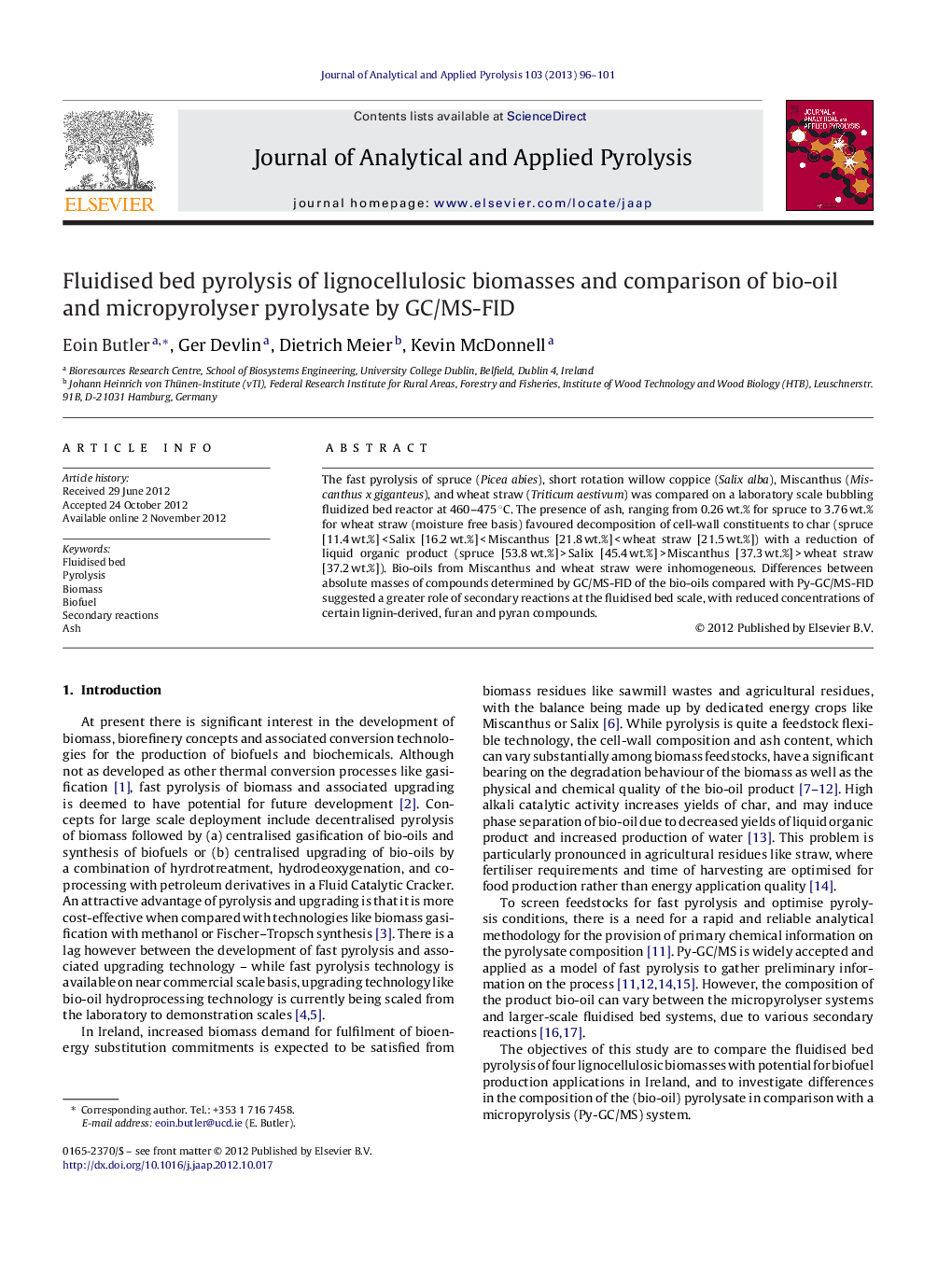| Article ID | Journal | Published Year | Pages | File Type |
|---|---|---|---|---|
| 1197175 | Journal of Analytical and Applied Pyrolysis | 2013 | 6 Pages |
The fast pyrolysis of spruce (Picea abies), short rotation willow coppice (Salix alba), Miscanthus (Miscanthus x giganteus), and wheat straw (Triticum aestivum) was compared on a laboratory scale bubbling fluidized bed reactor at 460–475 °C. The presence of ash, ranging from 0.26 wt.% for spruce to 3.76 wt.% for wheat straw (moisture free basis) favoured decomposition of cell-wall constituents to char (spruce [11.4 wt.%] < Salix [16.2 wt.%] < Miscanthus [21.8 wt.%] < wheat straw [21.5 wt.%]) with a reduction of liquid organic product (spruce [53.8 wt.%] > Salix [45.4 wt.%] > Miscanthus [37.3 wt.%] > wheat straw [37.2 wt.%]). Bio-oils from Miscanthus and wheat straw were inhomogeneous. Differences between absolute masses of compounds determined by GC/MS-FID of the bio-oils compared with Py-GC/MS-FID suggested a greater role of secondary reactions at the fluidised bed scale, with reduced concentrations of certain lignin-derived, furan and pyran compounds.
► Fluidised bed pyrolysis and Py-GC/MS-FID of spruce, Salix, Miscanthus, and wheat straw. ► More ash and hemicellulose in biomass decrease liquid organics and increase char. ► Certain compounds more susceptible to secondary reactions than others. ► Secondary reactions catalysed by alkali metals in char.
